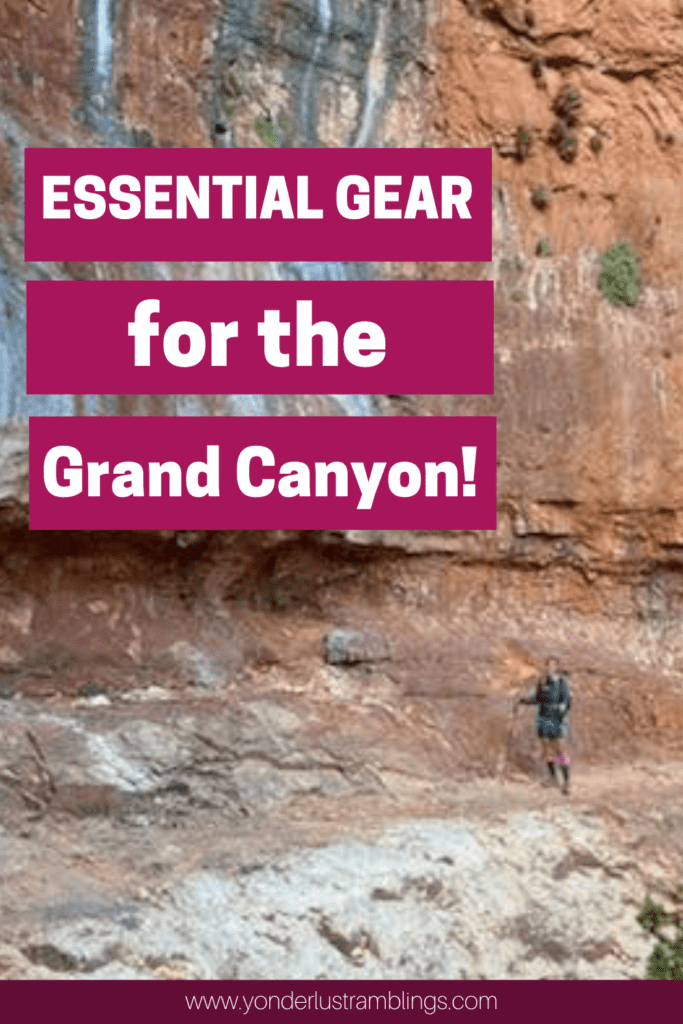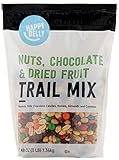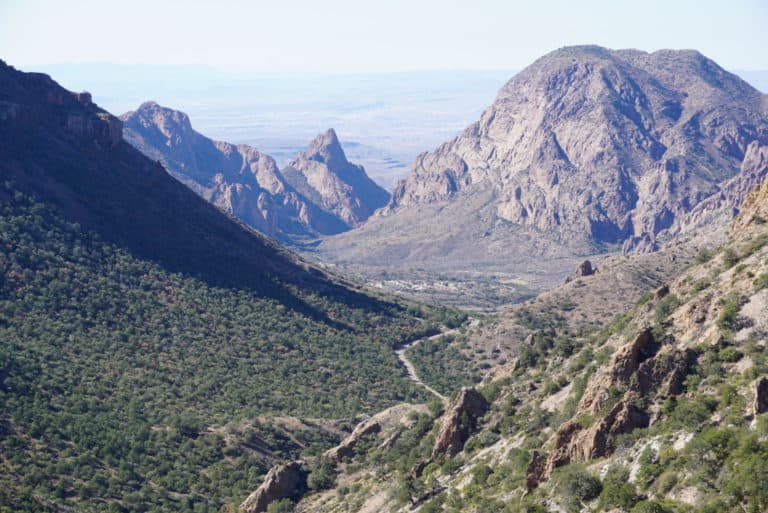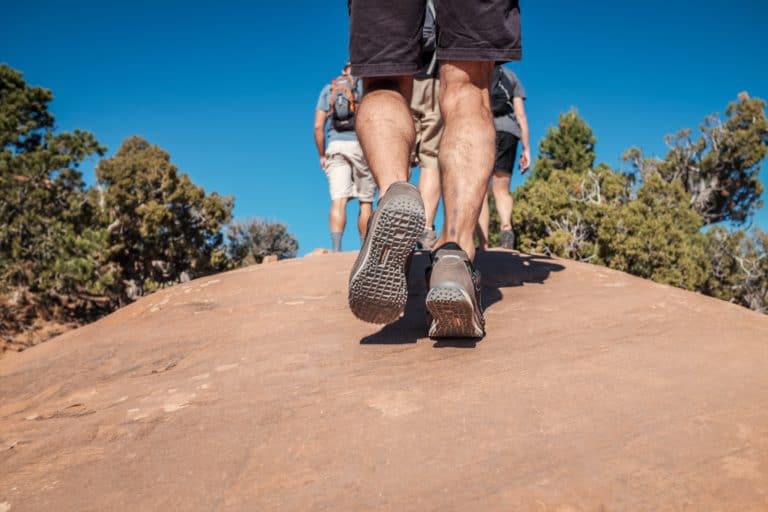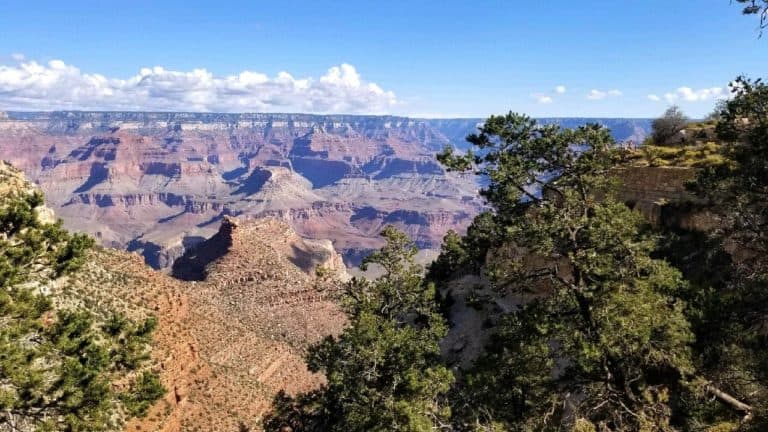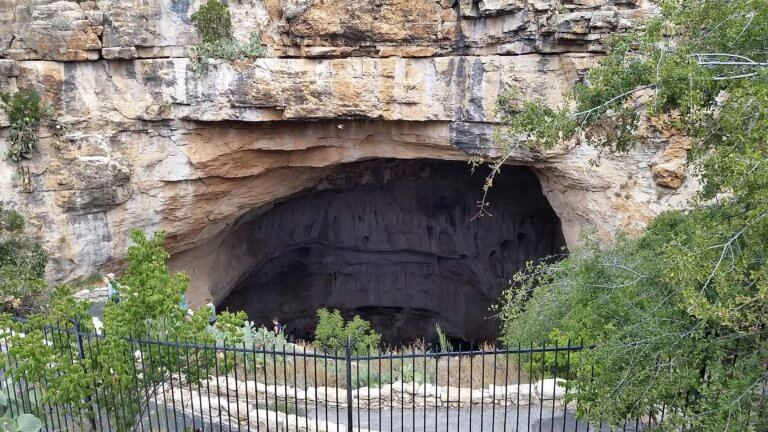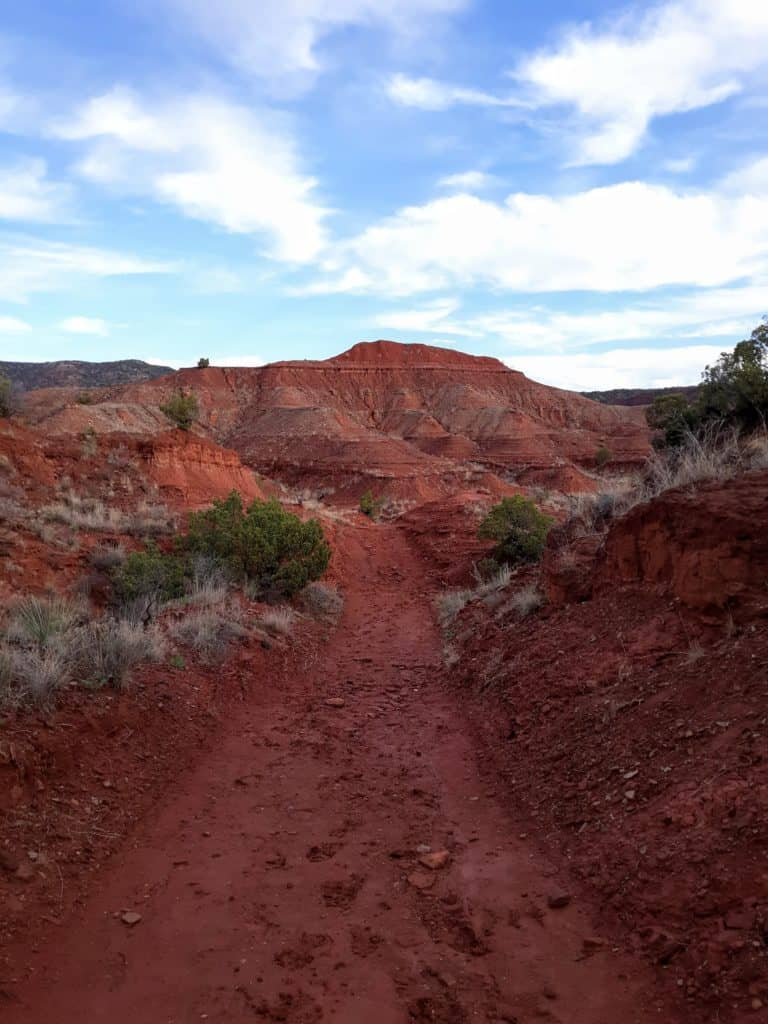Essential Hiking Gear for Grand Canyon Trails
Hiking in the Grand Canyon is a pinnacle of hiking! In all seasons, this region has so much to offer with its abundance of trails, views, and history. But it is also a region that requires careful planning and preparation. When creating your hiking gear packing list for Grand Canyon trails, you have to keep in mind the elements, environment, and terrain of this amazing National Park, and plan accordingly. For all its beauty, Grand Canyon can also be deceptively treacherous for the unprepared, so be ready with this complete list of all the essential hiking gear for Grand Canyon trails you will need!
Disclosure: Below are some affiliate links-these are all products I highly recommend. I won’t make any recommendations on this page that I haven’t tested or personally used!
Table of Contents
Essential Hiking Gear for Grand Canyon Trails
This guide will cover exactly how to plan out your hiking gear packing list for the Grand Canyon. No matter what trails you are planning to tackle, the foundation of your Grand Canyon hiking gear should include the same solid items of hiking gear. I will also take into consideration different seasons and locations in the Grand Canyon, and how that will affect which hiking gear you should bring.
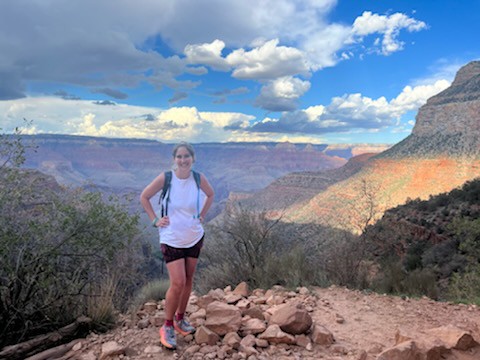
Recommended Quick Links for Your Grand Canyon packing List
- Trail Runners: HOKA One One Speedgoats
- Breathable mesh upper with seamless synthetic overlays
- Socks: Hilly Twin Skin socks
- Hilly Women's Twin Skin Anket, Magenta/Grey Marl, Medium
- Water Hydration System:
- Premium taste-free, leak-proof reservoir with fast flow rate offers hydration on the go for hikers, backpackers, travelers and mountain bikers
- ADVANCED WATER FILTRATION. Protects against, microplastics, chlorine, organic chemical matter and sand, dirt, cloudiness and more; improves taste
- Daypack: Camelbak Helena 20 Liter Daypack
(Make sure you have plenty of carabiners attached to your daypack also)
- Breathable Air Mesh: For lightweight comfort and air flow.
- Environmental Protection:
-
- Sunscreen
- Sunglasses
- Hat
- Snacks:
-
- Sandwich
- Beef Jerky
- Trail Mix / Nuts
- Tuna Packets
- Applesauce Pouches
- Squeezable Peanut Butter
- Honey Stinger Waffles
- GU Energy Gels
- Banana
- Carrots
- RX Bars
- NUUN Tablets / Electrolytes
- Emergency/First Aid Kit:
- Navigation:
- Brand-Oriented & Outdoor Charger Pro: With over ten years of experience in solar power banks, BLAVOR has already gained the favor and trust of millions of global users. BLAVOR only uses the highest-grade materials, to provide the most reliable and safe products to customers.
- Small, rugged, lightweight satellite communicator enables 2 way text messaging using the 100% global Iridium network (satellite subscription required)
Emergency Shelter:
(Another option is a SOL Bivy for emergency shelter)
- Personal Items:
The Basics of a Grand Canyon Packing List
No matter what trails you are hiking, from the all day Rim to River hike, to a shorter scenic day hike like the North Rim’s Widforss Trail, here are the basics to bring with you when hiking in the Grand Canyon.
- Footwear
- Socks
- Water
- Daypack
- Snacks
- Emergency First Aid Kit
- Navigation
- Emergency Shelter
- Environmental Protection
- The Right Clothes
Let’s take a closer look at each of these items making up your Grand Canyon hiking gear checklist, and dive into why each is so important!
- footwear! I truly believe that the Grand Canyon is a environment perfectly suited for a superb pair of trail runners! I’ve hiked multiple trails in both traditional hiking boots and trail runners, and I greatly prefer my awesome and unbeatable HOKA One One Speedgoats! They keep my feet feeling fresh, even on the longest and most grueling of Grand Canyon day hikes, like the Rim to Rim hike from the North Rim to the South Rim!
Trail runners have grip and traction for the uphills in Grand Canyon, with the added advantage of being lighter, quicker, and a little less clunky than hiking boots.
- footwear again! This time I am talking about socks! The condition of your feet will only be as good as the condition of your socks. The best thing you can do is surround your feet with a superbly breathable sock that will help proactively prevent blister development. I used to get blisters all the time on my long hikes and runs, until I discovered Hilly Twin Skin socks. The “twin skin” layers help to prevent the friction that causes blisters. Haven’t had a single blister since switching to Twin Skins. Be sure to pack a second backup pair that you can change into in the event of sand or dirt overload, or accidental soaking at a stream crossing.
- water, water, water, water, water, water, water, water! Always have plenty of water! Have a way to transport at least 3 liters of water on your person for any longer day hikes into the canyon. I recommend hiking with a 3 liter water hydration bladder system like this Platypus model, which I love because the wide mouth makes it easy to fill and clean, and this form of transportation system allows you to hydrate on the go. When it comes to water hydration bladders, be sure to test your bladder out before starting off to make sure there are no leaks. When hiking in an arid and unforgiving environment like the Grand Canyon, it is also not a bad idea to bring along a portable, compact filter like this Lifestraw I personally love, because in case of an emergency, on some trails you may find water sources. Lifestraws are lightweight, compact, and easy to use, so there really is no detriment to packing on in your day pack as a backup water hydration system. You can even get a Lifestraw water bottle, with the internal filter, so you can fill up and immediately start hydrating straight from the water bottle!
- a day pack! A mid sized day pack, like the Camelback Helena model that I use on all my day hikes, is best for day hikes in the Grand Canyon. It comes with a 2.5 liter water bladder included, but a 3 liter water hydration bladder easily fits inside as well, which is what I personally use. A day pack of this size will also give you adequate room to pack the rest of the 10 hiking essentials, plenty of snacks, and extras like a spare pair of socks.
- environmental protection! There are a handful of environmental protection items that you should include on your Grand Canyon packing list.
-
- the sun! When it comes to the brutality of the Grand Canyon sun, protect yourself with Chapstick, sunscreen, sunglasses, and a head covering of some sort, like a hat. In warmer months, or when hiking at the bottom of the canyon where daytime temps can reach into the 100’s even in the fall, you may also find it extremely beneficial to invest in a cooling towel, for dipping in the streams or getting wet with your transported water, and then applying to your neck, head, and shoulders to help keep cool.
-
- gaiters for the trail! In the Grand Canyon, it is very possible you might encounter some trails or portions of trails with sand or finely ground dirt! Affordable and easy to use gaiters like these will keep the sand and dirt out of your socks and shoes! And if you can keep the elements out, you will have to stop less, and enjoy the experience and the views more! Another benefit of properly protecting your feet – you are less likely to develop cringe-worthy blisters!
-
- a headlamp for the dark! You may think you won’t need one, but you may benefit from having the extra security of a lightweight headlamp like this no bounce Biolite headlamp. If you are hiking early to beat warmer afternoon temps, you may need a headlamp for the pre-dawn hours. Or if you happen to run late from a day hike in the Grand Canyon, it may help you with your way out. For example, in October, there is just about 12 hours of daylight. If something derails or slows you down on your hike, you will be happy to have the peace of mind of a headlamp to help guide your way, especially in an environment with perilous dropoffs and sheer cliffs.
- snacks, snacks, snacks! Snacks are important for energy, electrolytes, and sodium replacement when hiking in the Grand Canyon. I recommend going with snacks that are compact, lightweight, easy to eat on the go, easily digestible, energy packed, and salty! Here’s what the inside of my day pack looked like in regards to food:
-
- tuna packets – super lightweight and compact and a good source of protein
-
- almonds and trail mix– great source of easy to snack on energy
-
- beef jerky – a good salty food option
-
- RX bars – for a carb boost
-
- apple sauce squeezable packets – this is a personal favorite of mine, because I mostly just love applesauce, but they are nice for a little moisture content, and they are something that has always been easily digestible for me, and compact and easy to eat on the go!
-
- fruit snacks – more of a psychological treat if I just need a quick dose of sweet
-
- squeezable peanut butter packets– always a great option for a quick energy boost
-
- NUUN tablets – I don’t always end up using these, but I always bring them if I feel the need for an electrolyte level replacement and boost
-
- Salt tablets – I have used these on hot trails, as a way to monitor and replace possible sodium level loss and electrolyte loss.
-
- Banana – helps prevent cramping and give me a potassium boost
-
- Sandwich – a good old fashioned meat and cheese sandwich really hits the spot for me when it comes to bigger hiking snacks on longer day hikes in the Grand Canyon. Easy to make ahead, keeps well for a couple of hours, and is lightweight.
- Emergency / First Aid
-
- Always plan for things to come up, and for things to go wrong, especially in an environment like the Grand Canyon. Bring what you need for emergencies. This should include your salt tablets, first aid kit, blister protection, a whistle/signaling mirror combo, and Gear Aid tape for quick fixes. You should also bring some lightweight and compact emergency shelter gear, which is included later in this post.
- Navigation
-
- next are trail maps! In many parts of the Grand Canyon, especially near the bottom, you will likely not have great cell service. Many of the Grand Canyon’s trails are well marked, well maintained, and easily distinguishable, but then some aren’t, and others are less distinguishable due to the elemental factors of flash flooding, runoff, and other elements that can erode a trail and make it less distinguishable. You should always bring along a trail map, whether it is a traditional paper one, or a downloadable one from an app like AllTrails. If you plan to download, just be sure to do so before you start your hike in case of possible limited cell service.
-
- emergency communication device! As mentioned above, you may not have reliable cell service on many Grand Canyon trails. In case of an emergency, have a way to signal for help with an emergency communication device like this one! Yes they are expensive, but the potential of the Grand Canyon should not be underestimated, and every year there are numerous hikers who are either grateful they hiked with an emergency communication device, or regretted that they didn’t have one when running into trouble in the Grand Canyon!
- Emergency Shelter
-
- Yes, this post is aimed at day hikes in the Grand Canyon (for overnight hikes you will need to invest in more backpacking gear), but there are the occasional emergency situations that will benefit from having some kind of shelter. Plus, emergency shelter gear included in this packing list are lightweight and compact, so there is no real excuse not to include them in your pack. Remember, it may be 90 degrees during the day as you hike in the Grand Canyon in October, but nightfall can easily bring freezing temps. You have a couple different options of emergency shelter to include:
- Personal Items
-
- trekking poles! On many of Grand Canyon’s trails, especially the steeper ones like the Rim to River hike or the Rim to Rim hike, you may appreciate a extra helping hand of support. These Black Diamond hiking poles are the best out there and have unwaveringly supported me on many steep uphill climbs and summits, like the highest point in Colorado at Mount Elbert, or the highest point in the lower 48 states at California’s Mt. Whitney!
Layering for the Different Seasons
No matter what trails you are planning to hike, your Grand Canyon packing list should include all the above basics. But the different seasons in Grand Canyon have stark differences that require the right clothing and customized layering, depending on the season. Next I will break down what to wear dependent on the season,
Shoulder Seasons: Fall and Spring
Your clothing choices and layering will be similar in the shoulder seasons of fall and spring. Whether you are hiking on the North or South Rim, your mornings will be crisp and cool, and afternoons will warm significantly, especially if you venture down into the canyon. Here’s what you should include in your Grand Canyon packing list for fall and spring hikes.
***Note: spring and fall are recommended times to hike in the Grand Canyon. It is recommended to avoid long hikes in the summer or winter, due to environmental hazards (extreme heat in the summer, icy/slippery conditions in the winter).
OR
Cotton Tank / Tshirt
OR
Long Sleeve Layer for Early Mornings
Lightweight Outer Layer for Freak Weather
Winter Season:
Grand Canyon may appear to be largely a desert, but it can get brutal and cold in the winter! Winter hiking in the Grand Canyon requires special layering in order to be safe and comfortable.
*Note: the North Rim closes in October and does not reopen until May, so winter hiking in the Grand Canyon is targeted at hikes on the South Rim.
Base Layers:
Waterproof and Windproof Lightweight Outer Layer
Summer Season:
It is absolutely critical to be prepared for hiking in the Grand Canyon in summer. Your essential hiking gear for Grand Canyon trails HAS to include the right fabrics, in order to remain safe, especially if hiking into the canyon. Every year people die unfortunately due to factors including heat stroke and dehydration, so it is essential to know what to wear to help mitigate the heat, if you choose to hike in the Grand Canyon in the summer!
***Note: it is not recommended to hike in the Grand Canyon in the summer months due to the excessive heat, unless they are shorter day hikes, early in the morning, or at the North Rim, which is considerably cooler at the top.
Summer season hiking should include the same layers/fabrics as shoulder seasons of spring and fall. Stick with non chafing shorts, and my own personal preference, a cotton tank. Sunshirts also work. I prefer a cotton tank, because in the dry arid environment of the Grand Canyon, cotton can actually work to your advantage and hold onto moisture, that in turn helps to cool your core. I’ve hiked to the Colorado River multiple times in multiple layers and fabrics, and a cotton tank is my favorite top to hike in. I drench it at every stream crossing I encounter, or plan to use some of my carried water for that purpose. A cool cotton tank in the desert makes a big difference.
In addition to your top, stick with a pair of non chafing hiking shorts, or whatever pair of shorts you are used to wearing for other hikes. A head covering is also important, and in the case of summer season, make sure it is something that provides relief from the sun.
For my recommendations, just jump back up to my shoulder season recommendations, as they are the same.
PIN for LATER!
Last update on 2023-08-09 / Affiliate links / Images from Amazon Product Advertising API

